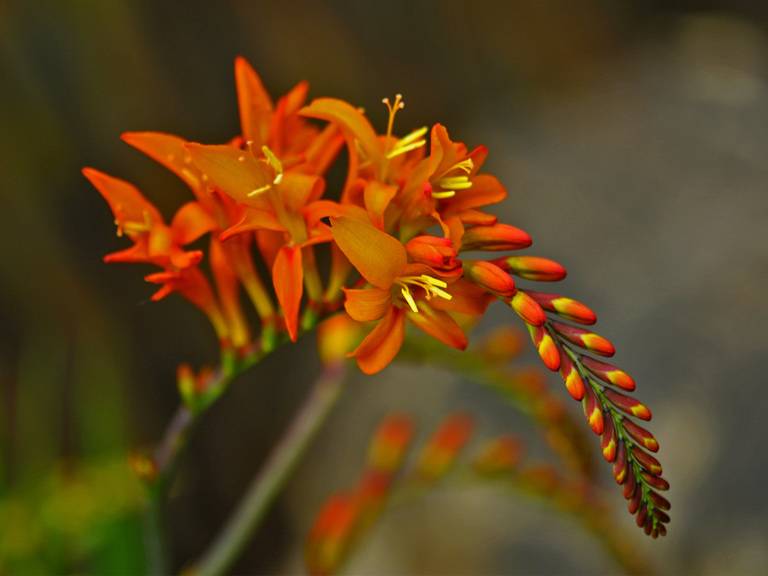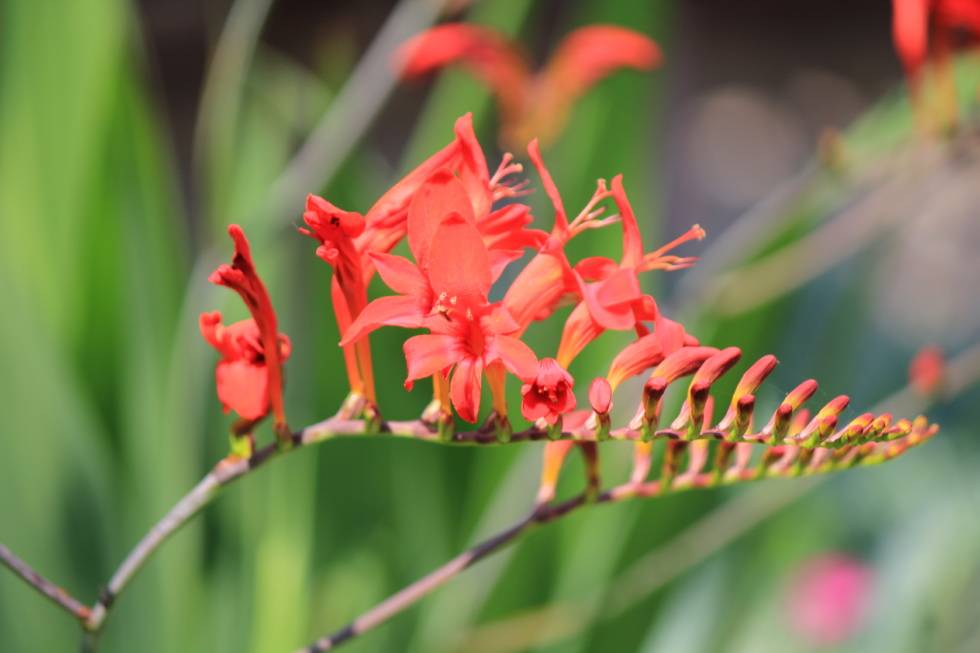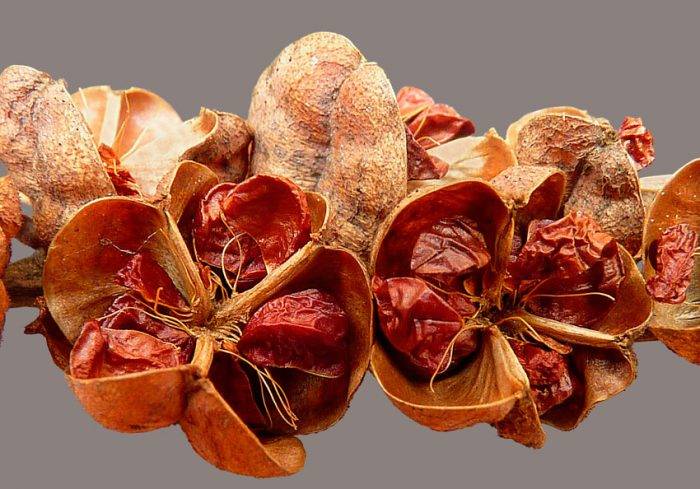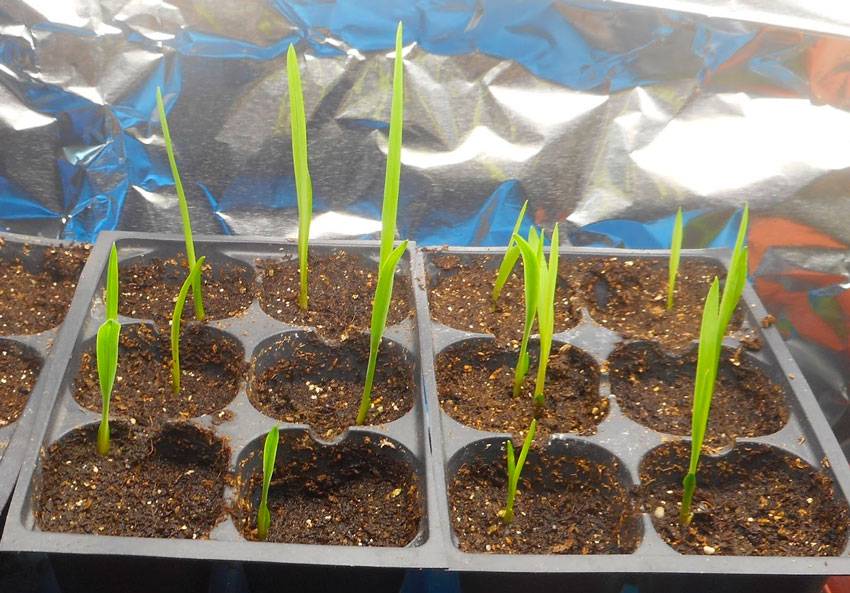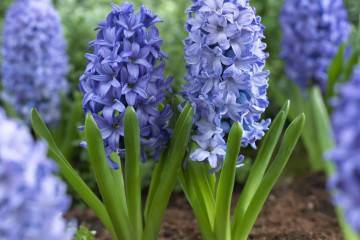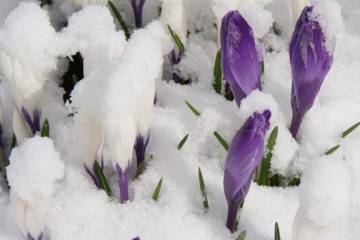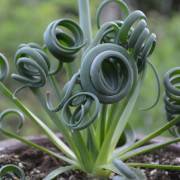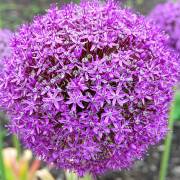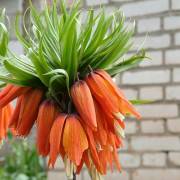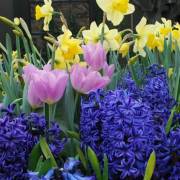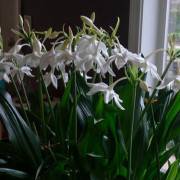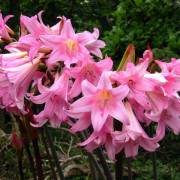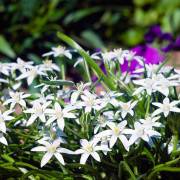Crocosmia - planting and care in the open field
Content:
A corm light-loving plant with graceful flowers has been grown in gardens since the 19th century. Today, fans of floriculture have the opportunity to buy different types and varieties of crocosmia, differing in shades, sizes, and the duration of the flowering season. Planting and caring for crocosmia is described below in the article.
Description of crocosmia (lat.Crocosmia)
The plant belongs to the Iris family (Latin Iridaceae). Crocosmia is a word formed from two Greek terms: "krokos", which meant "crocus" or "saffron", and "osme" - "smell", "aroma". Indeed, the dried corolla of crocosmia flowers have much in common with the famous spice.
The origin and appearance of the Crocosmia flower
The homeland of crocosmies is southern Africa. In total, the genus includes 9 species, from which many modern garden varieties and hybrids have been obtained. The most common hybrid was obtained in the 19th century. Lemoine of golden crocosmia and Potts.
In the corm, the surface is a mesh shell. The total height of the aerial part reaches 40-100 cm. The branching stem bears many xiphoid leaves.
The corolla of the flower is star-shaped, colored yellow, white, reddish or orange. The diameter of each flower is up to 5 cm. After pollination, multi-seeded round capsules are formed, opening into 3 valves.
Iris family
The Iris family includes only perennial herbaceous flowering plants with various forms of root systems (typical representatives are irises, saffron, gladioli, etc.). Their life cycle begins with the thawing of the soil in the spring and ends with the arrival of frost in the fall. Almost always, the rhizome grows horizontally, has a knobby shape, on which scars from leaves fallen at the end of the season remain.
The stem is formed by leaves and flowers. In the summer, a bud is formed next to the stem, which wakes up next year. In addition, the rhizome produces underground shoots, which, when cut off, become planting material.
Crocosmia perennial
Different species and varieties vary greatly in size. So, the width of the leaf varies within 5 mm - 3 cm, and the height of the peduncle can reach 150 cm. The inflorescence is spike-shaped (like rice) or paniculate (the flower formula remains the same - 6 fused petals each). Common to all varieties is intolerance to low temperatures, therefore, for the winter, corms are dug up and stored in basements until spring.
Popular types of crocosmia for growing in the garden
The following three species are most often planted in the garden. They deserve universal love due to their unpretentiousness and elegant appearance, as well as the ability to stand in the cut without fading for up to 2 weeks.
Crocosmia Lucifer
The hybrid is obtained on the basis of golden crocosmia (montbrecia). The height reaches 1 m or more. Peduncles contain a double row of opposite up to 15 pairs of buds, blooming sequentially from bottom to top. The petals are colored scarlet or red-orange. The plant looks very decorative in group planting.
Golden
This species is native to South Africa. The flowers are usually colored orange-yellow, but are more red or orange. It differs from other species in the late start of flowering - at the very end of August, therefore, it practically does not occur in regions with a short summer. In full dissolution, the corollas open like stars, revealing large stamens, like those of lilies.
Potts
Medium-sized species up to 80 cm high. Prefers wetlands, therefore, planted in gardens near ponds and other bodies of water. The plant is sensitive to air humidity. The flowers are smaller than those of other types of crocosmia. A pleasant shade - orange, going into a delicate peach.
Crocosmia: planting and care in the open field
If corms are not available, many varieties of crocosmia are available in the form of seeds. It is not at all difficult to grow seedlings from them even for a beginner, but such plants will bloom only for 3 years.
Crocosmia: growing from seeds
Sowing seeds in open ground is not recommended for two reasons. Firstly, seedlings will appear too late, and such plants will not bloom this year either. Secondly, it is easy to confuse seedlings with weeds, so you can't wait for mature plants. That is why the seedlings are sown on the windowsills, and in the warm season they are transplanted into flower beds.
When to plant seeds for seedlings
The optimal time for sowing is the end of February. The day has already increased by this time, and by the time of planting in open ground, the plants will grow up enough to get stronger during the season.
Seedling care
It is recommended to soak the seeds for a day before sowing. In this case, the water must be changed to fresh every 6 hours. Sowing is carried out in a soil mixture, which is prepared from the following components:
- peat;
- sand;
- humus;
- sod soil.
Containers with crops are covered with foil and left in a warm (22-24 ° C) bright place. Seedlings are expected for 2-3 weeks. The film is opened once a day for airing for 1 hour. Watering is carried out from a spray bottle, trying to obtain constant soil moisture.
How to pick seedlings
Seedlings can be dived at the stage of 2-3 leaves. They are seated in separate 100-gram cups, in which they will remain until transplanted into open ground.
Seedling care
Planting in open ground is possible when the soil warms up to 6-10 ° C. This time usually occurs in late April or early May. The landing site is chosen very light, but preferably with protection from strong winds. Usually crocosmia does not lie down, but with strong gusts with rain and hail, this can happen.
The soil is suitable permeable, the required groundwater level is 50 cm and below. Water stagnation at the roots is detrimental to these flowers. It is best to prepare the landing site in the fall. When digging the earth, add a bucket of humus, 40 g of superphosphate, 100 g of quicklime and 20 g of potassium chloride per square meter.
Crocosmia: planting and care in the open field
Planting of both seedlings and corms is carried out in the holes, leaving a distance of 10-12 cm between the specimens. 25-30 cm are left in the aisles.Immediately after planting, they water and shade for 2-3 days in the sunniest hours for adaptation.
After planting seedlings or last year's corms, plants need to provide comfortable conditions for growth and future flowering. It is necessary to take care of different varieties in about the same way, but it is better to clarify in the description of the planting material from the manufacturer.
Watering mode
In many ways, crocosmic care is similar to that required by gladioli. Water the garden every week, and even more often in the heat.
Top dressing
If the soil has been well fertilized since the fall, then top dressing can be omitted. On poor soils, watering is used every 2-3 weeks with a mullein 10 times diluted with water, alternating with the introduction of a full complex mineral fertilizer. In the budding stage, the plant requires a single application of monopotassium fertilizer.
Features of care during flowering
When the first flowers begin to bloom, the only thing that crocosmia needs is regular watering. At the same time, gardeners prefer to remove dried buds so that the forces of the rhizome are not wasted on ripening the seeds to the detriment of the splendor of the dissolution of the remaining buds.
Features of care during the rest period
After flowering is complete, the peduncles are removed. Seeds are rarely harvested, since they do not always retain their parental characteristics. The aboveground part is cut off with a decrease in night temperatures to 5 ° C. At this time, the corms are dug up for the winter.
Preparing for winter
The dug corms need to be washed, the spoiled ones removed, and the rest dried. The optimum storage temperature is 5-10 ° C. Good ventilation is essential.
Where in winter the air temperature drops only to 0 ° C, you do not need to dig out the corms. Sprinkle the soil with a layer of mulch made from shavings, needles, fallen leaves about 20 cm thick.
Possible pests and diseases of crocosmia
Gray rot and fusarium can harm plantings. Against ailments, the corms are treated before planting by immersion in a fungicide solution. Then the treatment is repeated a week later, spraying the aerial part with a solution. Planting without thickening and moderate watering are preventive measures.
Among pests, crocosmia is loved by aphids and spider mites. Insecticides and acaricides are used against them: fitoverm, actellik, aktara, etc.
In any garden, crocosmia can become one of the dominant perennials. It does not require complex care, but it cannot winter at freezing temperatures in the open field. It is worth taking a closer look at it, because its beauty is not inferior to the luxury of gladioli and crocuses.
